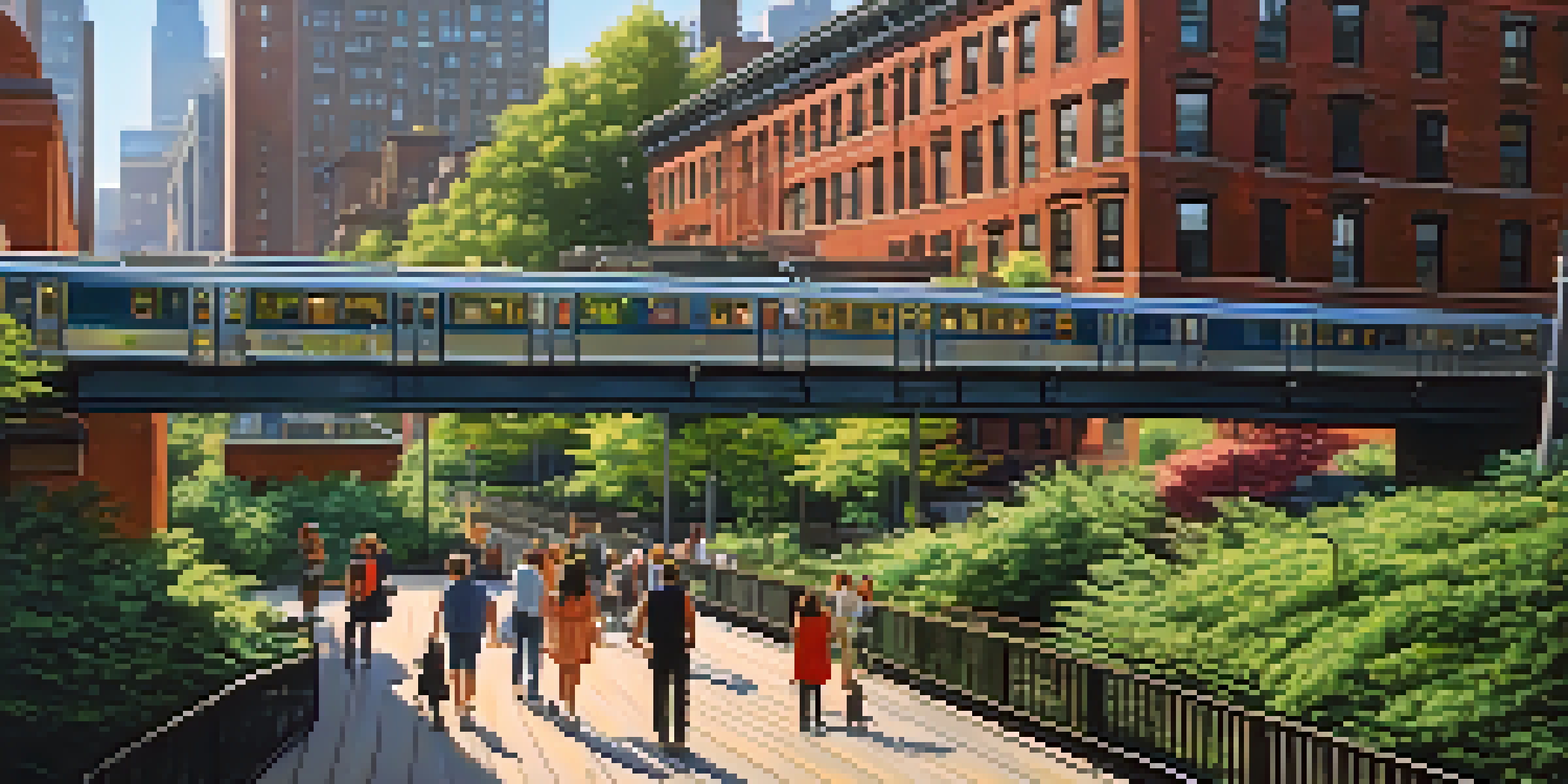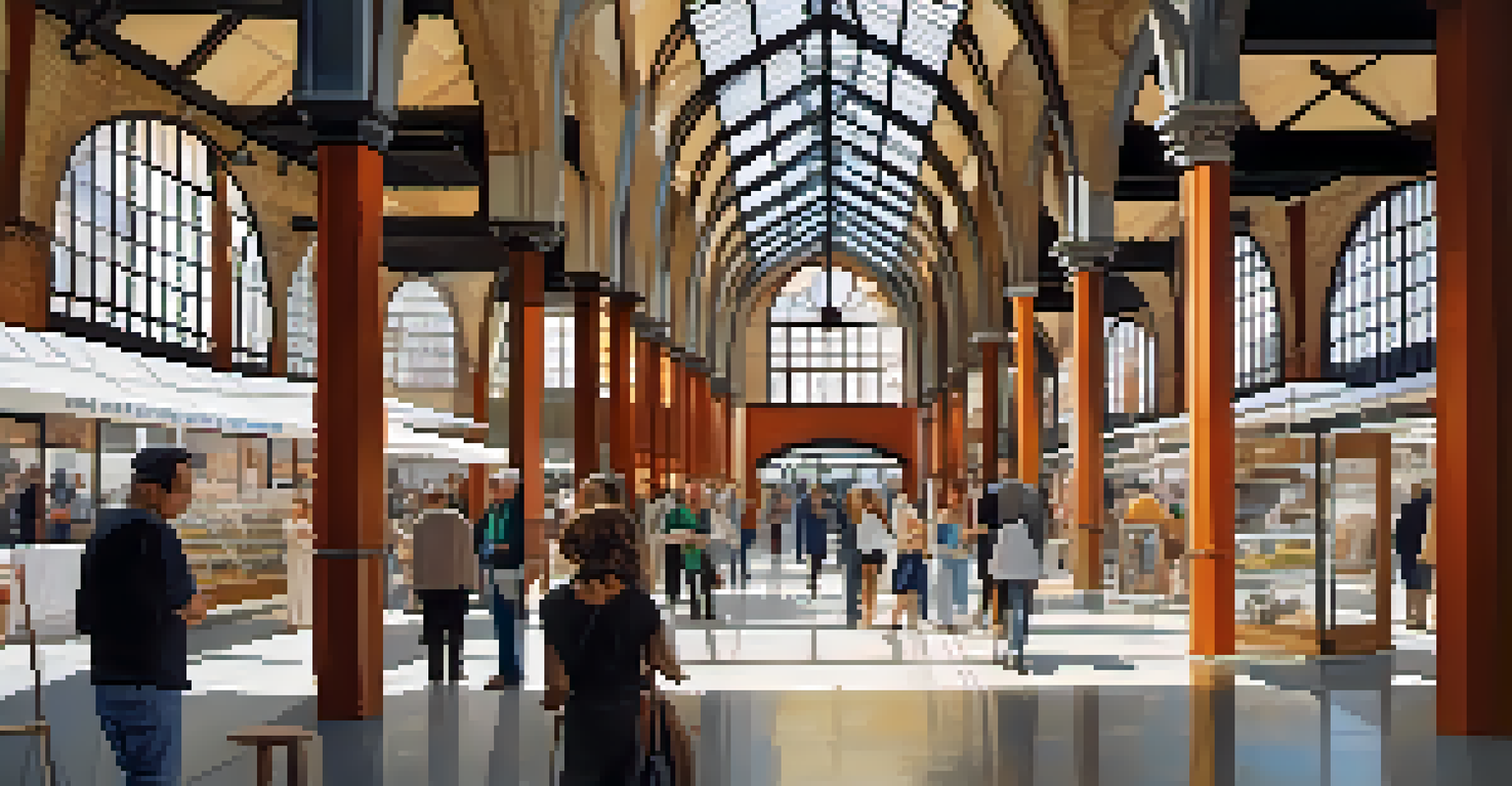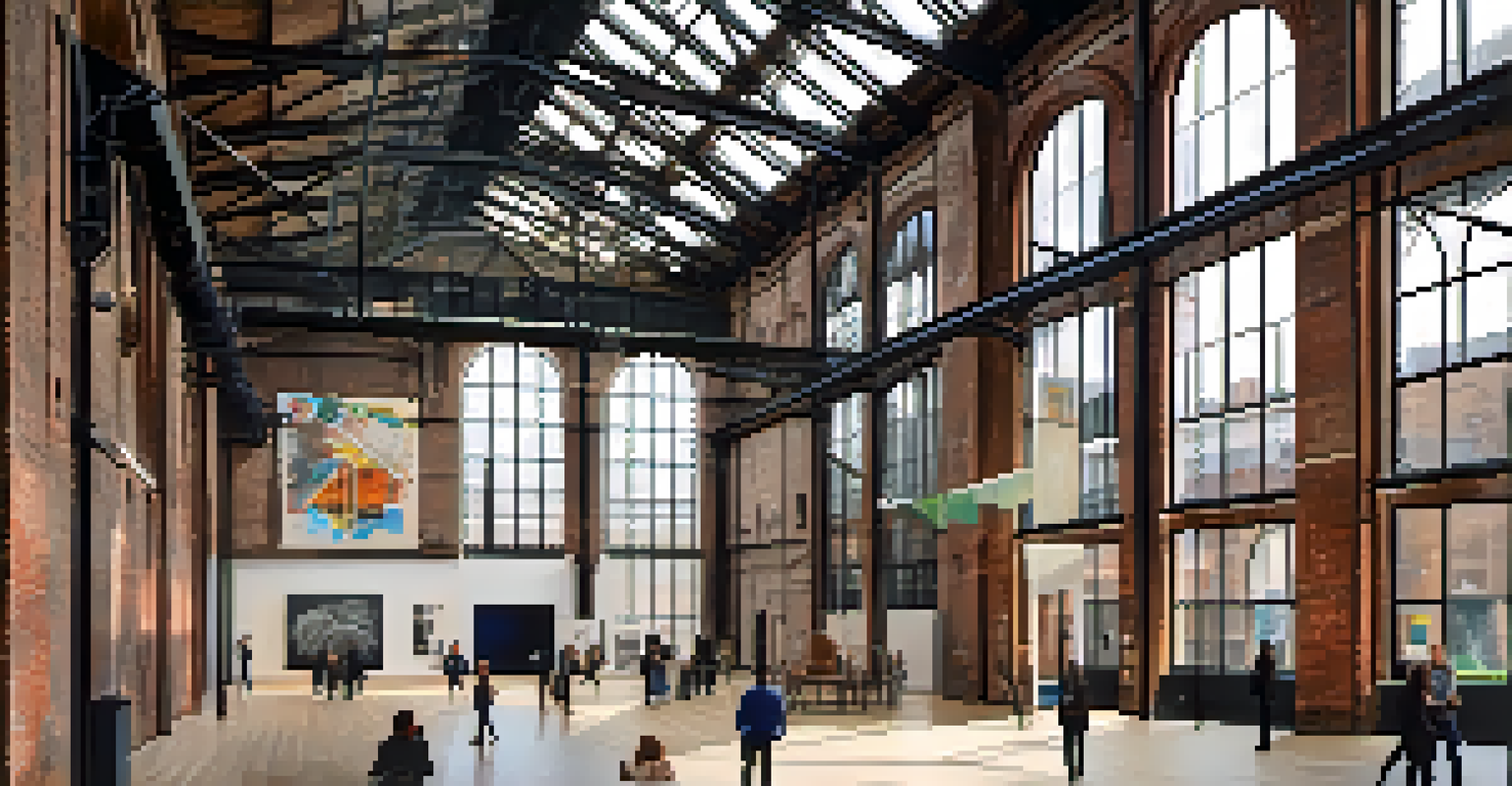Revitalizing Historic Spaces: Lessons from Around the Globe

The Importance of Preserving Historic Architecture
Historic architecture carries stories and memories that shape our cultural identity. When we preserve these spaces, we maintain a tangible connection to our past, allowing future generations to learn and grow from them. This aspect of preservation also fosters community pride and can attract tourism, which in turn boosts local economies.
We do not inherit the earth from our ancestors, we borrow it from our children.
Moreover, historic buildings often embody unique craftsmanship and design that modern structures might lack. By maintaining these characteristics, we can celebrate the artistry and creativity of past eras. This appreciation for craftsmanship adds depth and character to urban environments, making them more inviting and engaging.
In revitalizing these spaces, we not only save a piece of history but also promote sustainability. Adaptive reuse—transforming old buildings for new purposes—reduces waste and minimizes the environmental impact of new construction. It's a win-win for our cultural heritage and the planet!
Case Study: The High Line in New York City
The High Line is a prime example of how to breathe new life into an abandoned space. Once a derelict elevated railway, it has been transformed into a vibrant public park that showcases art, gardens, and community events. This innovative approach has turned a forgotten piece of infrastructure into a beloved urban oasis.

The success of the High Line lies in its design, which marries historical elements with modern landscaping and art. It retains the original railway tracks while integrating lush greenery, creating a unique experience for visitors. This blend of old and new illustrates how thoughtful design can honor history while serving contemporary needs.
Preserving History Boosts Communities
Maintaining historic architecture fosters community pride, attracts tourism, and enhances local economies.
Furthermore, the High Line has sparked economic growth in its surrounding neighborhoods. New businesses, restaurants, and galleries have emerged, revitalizing the area and enhancing community engagement. This transformation demonstrates the potential of historic spaces to drive economic development while enriching urban life.
Learning from Barcelona: The Case of El Born Centre
In Barcelona, the El Born Centre de Cultura i Memòria showcases how a historic market can be revitalized into a cultural hub. The restoration preserved the building's original structure while creating a space for exhibitions and community gatherings. This approach not only honors the past but also fosters cultural dialogue.
Preservation is the antidote to an increasingly disposable society.
El Born's design cleverly incorporates modern elements, such as glass walls that allow natural light to illuminate the space without overshadowing its history. This balance between old and new encourages visitors to appreciate both the architectural heritage and the contemporary cultural events taking place within.
The centre has also become a focal point for local artists and entrepreneurs, further enhancing its role in the community. By providing a platform for creativity and collaboration, El Born exemplifies how revitalized historic spaces can stimulate cultural growth and social interaction.
The Role of Community Engagement in Revitalization
Community engagement is crucial in revitalizing historic spaces, as it ensures that the needs and values of local residents are prioritized. When community members are involved in the planning process, it fosters a sense of ownership and pride. This participatory approach can lead to more successful and sustainable revitalization projects.
For instance, in Detroit, community-driven initiatives have transformed vacant lots into vibrant green spaces and gardens. These projects not only beautify the area but also provide residents with opportunities for collaboration, education, and recreation. This grassroots involvement highlights the power of community in shaping their own environment.
Sustainable Revitalization Practices
Adaptive reuse of historic spaces promotes environmental sustainability while preserving cultural heritage.
Moreover, when local residents have a say in the revitalization process, the resulting projects tend to reflect the unique character and culture of the area. This authenticity attracts visitors and fosters a deeper connection between the community and its history, ensuring the longevity of the revitalized space.
Integrating Modern Amenities into Historic Spaces
Revitalizing historic spaces doesn’t mean compromising on modern conveniences. Instead, integrating modern amenities can enhance the functionality of these spaces while preserving their historical integrity. For example, adding accessible restrooms or Wi-Fi can make these sites more welcoming to a broader audience.
A great example is the Tate Modern in London, which successfully transformed a former power station into a leading contemporary art museum. The conversion included modern exhibition spaces, cafes, and educational facilities, all while preserving the industrial charm of the original building. This thoughtful integration demonstrates how modern needs can coexist with historical significance.
By carefully considering how to add these amenities, designers can create spaces that honor the past while catering to contemporary lifestyles. This approach not only attracts visitors but also ensures that historic sites remain relevant in today's fast-paced world.
Sustainability: A Key Consideration in Revitalization
Sustainability is an essential aspect of revitalizing historic spaces, as it allows us to honor our past while protecting the future. Many historic buildings are rich in materials and craftsmanship that can be reused, reducing the need for new resources and minimizing waste. This practice is not just environmentally responsible; it also respects the legacy of the original structures.
For example, the renovation of the Hotel Emma in San Antonio involved reusing as much of the original building materials as possible. This commitment to sustainability not only preserved the hotel's unique character but also appealed to eco-conscious travelers. Such projects highlight the intersection of heritage and sustainability in modern design.
Community Engagement is Essential
Involving local residents in revitalization projects ensures their needs are met and strengthens community ties.
Incorporating green technologies, such as energy-efficient systems and sustainable landscaping, further enhances the environmental benefits of revitalized historic spaces. This holistic approach to sustainability ensures that these cherished sites can be enjoyed for generations to come while minimizing their ecological footprint.
Global Perspectives: Learning from Different Cultures
Revitalizing historic spaces is a global endeavor, with each culture offering unique insights and approaches. For instance, in Kyoto, Japan, there is a strong emphasis on maintaining harmony between the built environment and nature. This philosophy has led to the preservation of ancient temples and gardens, demonstrating the importance of balance in revitalization efforts.
In contrast, European cities like Paris and Rome integrate modern urban life with their rich histories through adaptive reuse projects. These cities have successfully transformed old warehouses and factories into trendy lofts and markets while keeping their historical essence intact. By learning from these diverse practices, we can develop a more comprehensive understanding of effective revitalization.

Ultimately, the lessons learned from around the globe remind us that revitalizing historic spaces is not just about preserving buildings but also about fostering community, culture, and connection. By embracing these varied perspectives, we can create vibrant, inclusive environments that celebrate our shared heritage.